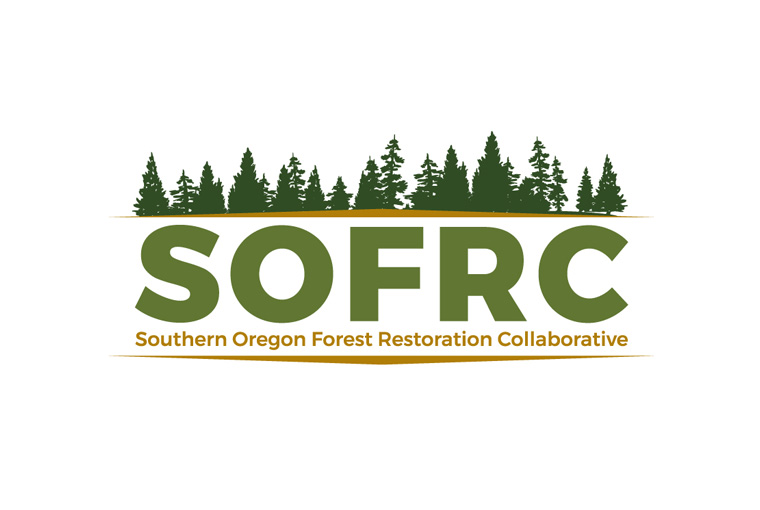Partner Profile | Southern Oregon Forest Restoration Collaborative (SOFRC)


Terry was also responsible for introducing Blue Forest to the Rogue Valley in 2020, where we now work alongside SOFRC and Lomakatsi on what are known as the West Bear All-Lands Restoration Project and the Upper Applegate Watershed (UAW) Protection Project.
Written by: Jessica Alvarez, Communications & Content Manager
The Southern Oregon Forest Restoration Collaborative (SOFRC) convenes an extensive network of conservation leaders, forestry experts, elected and government officials, community leaders and landowners who have come together around a comprehensive, science-based roadmap for healthier forests and communities known as the Rogue Basin Cohesive Forest Restoration Strategy – Rogue Basin Strategy, for short.
Led by Terry Fairbanks, Executive Director since 2019, SOFRC was established in 2005 by a small group determined to “knit together” varied conservation interests. SOFRC’s work includes identifying and evaluating strategic opportunities; assessing and developing projects; engaging in multiparty monitoring; and contributing to analyses to guide policymaking. SOFRC and partners developed a fire and forestry-based curriculum for schools that includes career pathways. The collective also acts as a convener and coordinator for the Rogue Forest Partners, which includes Lomakatsi Restoration Project, Blue Forest Rogue Valley I FRB implementation partner, alongside The Nature Conservancy, Oregon Department of Forestry, the Bureau of Land Management, the U.S. Forest Service and others.
In 2017, SOFRC and its partners released the Rogue Basin Strategy, a framework for forest recovery in the region. Six years in the making, this plan lays out a 20-year path to healthy forests across public and private lands.
“I often say that in this valley, with our particular set of partners, there’s two pillars: one of them is the work that Lomakatsi does with their ecological focused project implementation and workforce development. It’s so wonderful to have a resource like that,” explained Terry. “The other is our Rogue Basin Strategy, which helps us every time we put together a project, we can bring that document out, look at its analyses, and make a really good foundational case for why we’re working somewhere, where we’re going and the work we’re doing.”
With over 30 years of experience as a forester and silviculturist for the U.S. Forest Service and later the Bureau of Land Management, Terry understands forested landscapes, knows the community, and has been leading the collective since retiring in 2017. She explains that for a forest restoration project to be successful, it only needs to treat a percentage of any particular landscape to get up to about a 70% reduction in wildfire risk, “if you treat in the right places.” This is the importance and the value of the Rogue Basin Strategy—it provides a basis for evaluation on which to guide a project plan. “Are you protecting habitat and old growth? Are you reducing risk to communities and reducing risk to landscapes? Are you doing anything that impacts climate change?” she said.
Terry was also responsible for introducing Blue Forest to the Rogue Valley in 2020, where we now work alongside SOFRC and Lomakatsi on what are known as the West Bear All-Lands Restoration Project and the Upper Applegate Watershed (UAW) Protection Project. The two projects were developed around the Rogue Basin Strategy and are being funded through Blue Forest’s FRB Catalyst Facility as part of the Rogue Valley I FRB. Blue Forest is grateful for SOFRC and all our partners in the Rogue Valley. In 2024, we hope to continue building meaningful partnerships and protecting this beautiful landscape and its communities.
To learn more about the collaborative work of Blue Forest and partners in the Rogue Valley, check out this short film by award-winning photographer and videographer, Zach Krahmer.